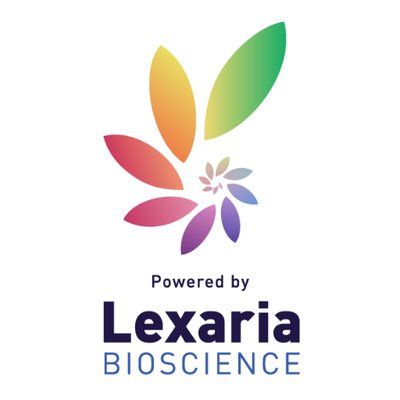预约演示
更新于:2025-12-09

Zhejiang University
更新于:2025-12-09
概览
标签
肿瘤
其他疾病
免疫系统疾病
小分子化药
蛋白水解靶向嵌合体(PROTAC)
自体CAR-T
疾病领域得分
一眼洞穿机构专注的疾病领域
暂无数据
技术平台
公司药物应用最多的技术
暂无数据
靶点
公司最常开发的靶点
暂无数据
| 排名前五的药物类型 | 数量 |
|---|---|
| 小分子化药 | 108 |
| 蛋白水解靶向嵌合体(PROTAC) | 21 |
| 合成多肽 | 9 |
| 化学药 | 8 |
| CAR-T | 8 |
关联
206
项与 浙江大学 相关的药物作用机制 CDC20抑制剂 [+1] |
在研适应症 |
最高研发阶段批准上市 |
首次获批国家/地区 美国 |
首次获批日期2023-02-28 |
作用机制 GIPR激动剂 [+1] |
在研机构 |
最高研发阶段批准上市 |
首次获批国家/地区 美国 |
首次获批日期2022-05-13 |
作用机制 BHLHE40 inhibitors [+1] |
在研机构 |
原研机构 |
最高研发阶段批准上市 |
首次获批国家/地区 中国 |
首次获批日期2022-01-10 |
823
项与 浙江大学 相关的临床试验NCT07252089
Impact of Decision Support Tools on Amputation Decisions in Diabetic Foot Patients: A Quasi-Experimental Study
To verify whether amputation decision-making aids can alleviate the decisional dilemma in diabetic foot patients.
开始日期2026-05-01 |
申办/合作机构  浙江大学 浙江大学 [+1] |
NCT07240857
A Clinical Study Evaluating the Safety and Efficacy of Local Injection of ACT#001 Chimeric Antigen Receptor T Cells in the Treatment of Castration-Resistant Prostate Cancer
An exploratory clinical study evaluating the safety and efficacy of ACT#001 chimeric antigen receptor T-cell (CAR-T cell) local injection in the treatment of castration-resistant prostate cancer.
开始日期2025-12-31 |
申办/合作机构  浙江大学 浙江大学 [+1] |
NCT07263295
Evaluation of Diaphragmatic Function After Interscalene Brachial Plexus Block With Liposomal Bupivacaine: A Cohort Study
The study aims to evaluation the effects of Liposomal Bupivacaine on diaphragmatic function in patients undergoing upper limb surgery who receive Interscalene Brachial Plexus Block. A total of 120 eligible patients will be enrolled and divided into two groups: Group A will receive 20ml of 0.5% Hydrochloride Bupivacaine , while Group B will receive 10ml of 0.5% Hydrochloride Bupivacaine plus 10ml of Liposomal Bupivacaine. Assessments of diaphragmatic function, pulmonary function, and pain intensity will be performed before the block and at different time points after the block, with follow-up for adverse events. The study is scheduled to run from September 2025 to September 2026, with strict adherence to privacy protection and ethical guidelines.
开始日期2025-12-05 |
申办/合作机构 |
100 项与 浙江大学 相关的临床结果
登录后查看更多信息
0 项与 浙江大学 相关的专利(医药)
登录后查看更多信息
106,096
项与 浙江大学 相关的文献(医药)2026-12-01·Nano-Micro Letters
Correction: Optimizing Exciton and Charge-Carrier Behavior in Thick-Film Organic Photovoltaics: A Comprehensive Review
作者: Yang, Yaxin ; Yin, Shouchun ; Chen, Hongzheng ; Zhan, Lingling ; Wei, Lu
2026-12-01·Nano-Micro Letters
Optimizing Exciton and Charge-Carrier Behavior in Thick-Film Organic Photovoltaics: A Comprehensive Review
Review
作者: Yang, Yaxin ; Yin, Shouchun ; Chen, Hongzheng ; Zhan, Lingling ; Wei, Lu
Abstract:
Organic photovoltaics (OPVs) have achieved remarkable progress, with laboratory-scale single-junction devices now demonstrating power conversion efficiencies (PCEs) exceeding 20%. However, these efficiencies are highly dependent on the thickness of the photoactive layer, which is typically around 100 nm. This sensitivity poses a challenge for industrial-scale fabrication. Achieving high PCEs in thick-film OPVs is therefore essential. This review systematically examines recent advancements in thick-film OPVs, focusing on the fundamental mechanisms that lead to efficiency loss and strategies to enhance performance. We provide a comprehensive analysis spanning the complete photovoltaic process chain: from initial exciton generation and diffusion dynamics, through dissociation mechanisms, to subsequent charge-carrier transport, balance optimization, and final collection efficiency. Particular emphasis is placed on cutting-edge solutions in molecular engineering and device architecture optimization. By synthesizing these interdisciplinary approaches and investigating the potential contributions in stability, cost, and machine learning aspects, this work establishes comprehensive guidelines for designing high-performance OPVs devices with minimal thickness dependence, ultimately aiming to bridge the gap between laboratory achievements and industrial manufacturing requirements.
2026-05-01·Neural Regeneration Research
Brain insulin resistance and neuropsychiatric symptoms in Alzheimer’s disease: A role for dopamine signaling
Article
作者: Kontogianni, Anastasia ; Chen, Wenqiang ; Yang, Hongbin
1,895
项与 浙江大学 相关的新闻(医药)2025-12-09
有机合成与酶催化在分子构建中具有显著的互补性,两者的结合为复杂化合物的高效、绿色和立体选择性制备提供了新的发展方向。尽管随着定向进化技术的进步,酶催化逐渐能够作用于非天然底物,但在实际应用中,将有机合成与生物催化深度融合仍面临挑战。当前,现有的逆合成模型大多基于纯有机反应数据训练,对酶催化步骤预测能力有限,而现有的混合规划算法往往依赖模板匹配,在路线整合与酶推荐方面灵活性不足。此外,现有平台的自动化程度较低,难以适应日益复杂的合成场景,亟需开发能够自主进行混合有机–酶催化规划的智能化策略。
近日,浙江大学药学院侯廷军和谢昌谕团队、澳门理工大学姚小军团队在Nature Communications上发表了题为“A Virtual Platform for Automated Hybrid Organic-Enzymatic Synthesis Planning”的研究成果。作者提出了一个全新的AI驱动混合式合成规划平台ChemEnzyRetroPlanner,涵盖混合逆合成设计、反应条件预测、酶反应识别及活性位点验证等功能。并基于Llama3.1模型构建了链式推理智能体,能够自主协调调用丰富的化学与酶催化工具,实现了从路径规划到可行性评估的自动化。实验结果表明,ChemEnzyRetroPlanner在多个基准数据集及天然产物合成任务上均优于主流逆合成工具,展示了其在药物合成路线设计中的实用性与准确性。
图1:ChemEnzyRetroPlanner 混合合成规划平台概览。(a)平台的技术框架及其支持的三种交互模式:图形界面、程序化 API 和智能 Agent。(b)平台包含的主要算法模块。
浙江大学药学院为本论文的第一署名单位,浙江大学药学院博士后王晓瑞与尹晓丹为共同第一作者,浙江大学侯廷军教授和谢昌谕教授、澳门理工大学姚小军教授为共同通讯作者。
供稿:药物代谢与药物分析研究所
修稿:金成庆
审稿:翁勤洁
点击名片,关注我们
2025-12-08
航 空 航 天
1. 新英量子通信卫星发射成功
11月28日,新加坡SpeQtral公司与英国RAL Space联合研制的“SpeQtre”量子通信立方星,由SpaceX火箭成功送入太阳同步轨道。这颗仅微波炉大小的卫星搭载了空间级纠缠光子源和探测器,旨在验证从低成本小型卫星平台进行安全量子密钥分发的可行性。此举为未来构建全球量子安全通信网络提供了新的技术路径。
2. 我国3D打印发动机完成首次飞行
近日,由中国航发自主研制的3D打印极简涡喷发动机圆满完成首次飞行试验。试验持续30分钟,飞行高度达6000米,发动机全状态工作正常。该发动机超过四分之三重量的零件采用3D打印制造,零件数量大幅减少,实现了轻量化与高性能,未来可为巡飞弹、无人机等平台提供新型动力解决方案。
3. 中国台湾“福卫八号”首星入轨
11月29日,中国台湾地区“福尔摩沙卫星八号”计划的首颗“齐柏林卫星”成功发射入轨。该卫星为台湾本土自制,同箭发射的还有5颗由高校与企业研制的立方星。此次任务旨在积累太空产业技术经验,拓展卫星影像的多元应用与商业服务。
4. 我国首个火箭网系回收海上平台交付
11月30日,我国首个火箭网系回收海上平台“领航者”成功交付。该平台将与其他装置协同,在海上构建一个稳定可靠的火箭回收系统,其原理类似于航母的阻拦索。平台攻克了与火箭高精度运动协同、复杂海况动力定位、船体结构承载等多项技术难点,获得了船级社认证。
5. 空客将采用中国卫星互联网服务
12月4日,空中客车公司与上海氦帆科技有限公司签署市场合作协议,将使用后者的“氦帆星座”低轨卫星互联网服务。该星座能提供高速、低延迟的宽带连接,未来将用于提升客机乘客的空中上网体验,并共同开发基于低轨通信的智能化航空服务。
生 物 医 药
1. 中国科协论坛聚焦生物医药突破
11月29日,中国科协举办2025年第九期科技会堂论坛,主题为“生物医药技术突破”。中国工程院院士陈志南、马丁等专家作报告,重点介绍了“免疫细胞治疗2.0与抗体药物4.0时代”的发展脉络与应用现状,并围绕创新药研发、科技成果转化等议题进行了深入交流。
2. 无创透皮胰岛素递送技术问世
浙江大学团队在《自然》期刊发表成果,首次实现了胰岛素的无创透皮递送。团队发现一种名为“OP”的聚合物能高效穿透皮肤屏障,将其与胰岛素结合后,制成“OP-I” conjugate,在糖尿病模型动物实验中取得了与皮下注射相当的降糖效果,且皮肤屏障完整,安全性高。该技术平台还有望用于递送其他蛋白、抗体类药物。
3. 新型“基因魔剪”疗法有望治愈艾滋病
武汉科技大学顾潮江教授团队在《分子疗法》上发表了全球首创的艾滋病基因疗法。该疗法利用工程化改造的外泌体作为“生物快递”,精准地将CRISPR-Cas12a“基因剪刀”递送至靶细胞,可清除处于活性复制期和潜伏期的艾滋病毒。在感染小鼠实验中,部分实现了病毒的完全清除。该技术已通过医学伦理审查,进入临床研究阶段。
4. 全球创新团队齐聚深圳探讨产业落地
11月30日,从中国(深圳)创新创业大赛国际赛脱颖而出的十余支全球团队,参访了深圳中欧创新医药与健康研究中心。这些团队带来了细胞治疗、脑机接口、智能胶囊机器人等前沿技术项目,与深圳当地的产业生态、政策支持及转化服务平台进行了深度对接,探讨落地可能性。
5. 西湖大学无人机叠飞技术登《自然》
西湖大学智能无人系统实验室攻克了两架无人机在强气流干扰下近距离叠飞并协同作业的难题。上方的无人机能伸出操作手,以亚厘米级精度抓取下方无人机搭载的工具。该成果依靠自主研发的“气流补偿算法”和“柔性电磁对接”装置实现,是中国多旋翼无人机技术首次登上《自然》杂志。
本公众号发布的【硬科技周报】栏目,
科创群星整理自全网时事资讯及热点内容,仅作分享使用。
细胞疗法引进/卖出免疫疗法
2025-12-08
·今日头条
近日,一些媒体开始报道剑桥大学原副校长Nigel Slater已经全职加盟浙江大学。经查阅浙江大学相关院系的信息,可以看到浙江大学基础交叉研究院发布的一则授课公告,其中提到浙江大学求是讲席教授奈Nigel Slater主讲,基础交叉研究院官网也报道了讲课的相关情况,显示这位知名学者加盟浙大的消息是真实的。
01 奈杰尔·斯莱特情况
基础交叉研究院官网报道中介绍Nigel Slater教授长期深耕生物制药、疫苗及基因治疗药物的生产与制剂研发领域,具有丰富的生物制药经验,在临床试验工业界与学术界都享有重要地位,学术成果与行业贡献广受认可。
Nigel Slater教授曾任剑桥大学菲茨威廉学院院长、副校长等职。入选英国皇家工程院院士,获颁英国化学工程师协最高荣誉“唐纳德勋章”。
这位顶尖科学家加盟浙大,显示以浙大为代表的一批中国名校对于国外顶尖学者的吸引力与日俱增。不仅这位牛津大学前副校长,在之前已经有一批文理工医等领域的世界顶尖学者加盟了浙大。例如24年5月,英国社会科学院院士、伯明翰大学前副校长Simon Collinson教授正式加盟浙江大学,成为“浙江大学青山讲席教授”。
一大批来自全球各地的顶尖学者的加入,为浙大国际学术声誉的提升提供助力的同时,也为浙大进入世界一流大学,冲击世界顶尖名校注入澎湃动力。浙大之所以能吸引大批国内外顶尖学者加盟,在于浙大开放的办学理念,以及强力推行的“人才强校”核心战略,实施的“学术大师汇聚”计划等等举措。
02 冲击世界一流前列
浙江大学在世纪之交合并了杭州大学、浙江农业大学、浙江医科大学,成为文理工医农兼备且均衡的综合性高校,在国内名校中学科设置最完备的。在整合资源之后,浙大发展进入了快车道,综合实力不断攀升,大成果不断涌现。
如今的浙大已经在强势争夺国内高校top3的位置。一流建设学科入选21个,学科评估A类及A+数量位居前3名,2012年以来的国家三大奖总量位居全国第二名。在国际排名中表现卓越,在QS榜全球第49名,在U.S.News全球第45名,在THE第全球47名,在ARWU榜全球第24名,均在全球前50名,已经超过了上交,整体位居国内第三名。
很多人认为浙大排名上升靠的是大而全,但国内合并的院校何其多,能做到浙大这么成功的还很难见到。马琰铭校长在新生开学典礼上就指出“浙大在全球高校四大主流排行榜,均进入了世界前50名,这是学校综合实力的充分体现,也是国内外同行对学校水平声誉的广泛认可”。
浙大已经较为稳定的排在全球前50名,从排名上看已经属于世界一流大学行列了。浙江省对于浙大的发展目标已经清晰,不再满足于成为世界一流大学。在今年9月份,浙江省委常委会专门研究浙江大学发展,提出了冲击“世界一流大学前列”的目标。
03回顾与建议
浙大的快速发展得益于浙江的极高重视,为浙大提供了源源不断的财力支撑和政策支撑。2025年预算经费已达352亿,位居全国第2名。强大的财力为建设大批高端科研平台,大批量引进高层次人才奠定了物质基础。同时浙大的发展也得力于学校人才优先的战略。
浙大虽然在国际上的排名均进入世界前50名,但在研究声誉上还需要努力,这种主观声誉的提升有时候比客观数据更难,毕竟西方对中国的学术偏见还是比较深的。以U.S.News为例,浙大研究声誉位居国际第80名,远低于学校45名的综合排名。
国外顶尖学者的不断引进,将有利于提高浙大在国际学术圈的声音,提升浙大的国际学术声誉,有利于国外对其世界级名校的定位。浙大在高层次人才上的不断突破,为浙大的双一流建设提供了澎湃动能。如何建设成为世界一流大学前列,成为世界顶尖名校将是浙大下一步最大的任务。
希望浙大发展越来越好!
疫苗基因疗法高管变更
100 项与 浙江大学 相关的药物交易
登录后查看更多信息
100 项与 浙江大学 相关的转化医学
登录后查看更多信息
组织架构
使用我们的机构树数据加速您的研究。
登录
或

管线布局
2026年01月07日管线快照
管线布局中药物为当前组织机构及其子机构作为药物机构进行统计,早期临床1期并入临床1期,临床1/2期并入临床2期,临床2/3期并入临床3期
药物发现
55
125
临床前
临床申请批准
2
22
临床1期
临床2期
2
1
临床3期
其他
34
登录后查看更多信息
当前项目
| 药物(靶点) | 适应症 | 全球最高研发状态 |
|---|---|---|
紫杉醇 ( Tubulin ) | 高级别胶质瘤 更多 | 临床3期 |
辛萸贴片 | 复发性阿弗他溃疡 更多 | 临床2期 |
菊花舒心片 | 稳定型心绞痛 更多 | 临床2期 |
AL58805 ( PI3Ks x mTOR ) | 头颈部肿瘤 更多 | 临床1期 |
Anti-CD70 UCAR-T(Zhejiang University) ( CD70 ) | 晚期恶性实体瘤 更多 | 临床1期 |
登录后查看更多信息
药物交易
使用我们的药物交易数据加速您的研究。
登录
或

转化医学
使用我们的转化医学数据加速您的研究。
登录
或

营收
使用 Synapse 探索超过 36 万个组织的财务状况。
登录
或

科研基金(NIH)
访问超过 200 万项资助和基金信息,以提升您的研究之旅。
登录
或

投资
深入了解从初创企业到成熟企业的最新公司投资动态。
登录
或

融资
发掘融资趋势以验证和推进您的投资机会。
登录
或

生物医药百科问答
全新生物医药AI Agent 覆盖科研全链路,让突破性发现快人一步
立即开始免费试用!
智慧芽新药情报库是智慧芽专为生命科学人士构建的基于AI的创新药情报平台,助您全方位提升您的研发与决策效率。
立即开始数据试用!
智慧芽新药库数据也通过智慧芽数据服务平台,以API或者数据包形式对外开放,助您更加充分利用智慧芽新药情报信息。
生物序列数据库
生物药研发创新
免费使用
化学结构数据库
小分子化药研发创新
免费使用




